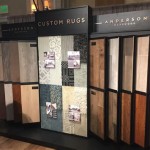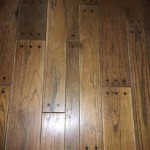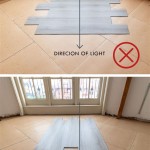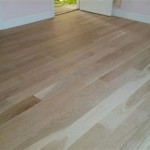What Is The Best Wood To Use For Boat Flooring?
Selecting the optimal wood for boat flooring is a critical decision that impacts the vessel's aesthetics, durability, safety, and overall value. The marine environment presents unique challenges, including constant exposure to moisture, saltwater, UV radiation, and the potential for physical wear and tear. Therefore, not all wood species are suitable for this application. Understanding the properties of various wood types and their resistance to these environmental factors is essential for making an informed choice.
The "best" wood for boat flooring often depends on a balance of factors, including budget, desired aesthetic, the intended use of the boat (e.g., freshwater vs. saltwater), and the level of maintenance the owner is willing to undertake. There's no single definitive answer, but rather a selection of viable options each with its own set of advantages and disadvantages.
This article will explore several wood species commonly used in boat flooring, detailing their properties, benefits, and drawbacks to aid in selecting the material best suited to specific needs and circumstances. The discussion will encompass both hardwoods and softwoods, highlighting the characteristics that make them appropriate (or inappropriate) for marine applications.
Key Considerations When Selecting Boat Flooring Wood
Several factors should be carefully evaluated when choosing wood for boat flooring. These considerations extend beyond mere aesthetics and encompass the structural integrity and longevity of the flooring. Ignoring these factors can lead to premature failure, costly repairs, and potentially unsafe conditions aboard the vessel.
Moisture Resistance: This is arguably the most crucial factor. Wood used in boat flooring must be able to withstand constant or frequent exposure to water without rotting, warping, or degrading. The natural oil content of some woods offers inherent protection, while others require extensive treatment and sealing to achieve acceptable moisture resistance.
Durability and Hardness: The flooring will be subjected to foot traffic, potential impacts, and the abrasion of gear and equipment. A durable, hard wood will resist dents, scratches, and wear, maintaining its appearance and structural integrity over time. The Janka hardness scale is a useful metric for comparing the hardness of different wood species.
Resistance to Decay and Insects: The marine environment fosters the growth of fungi and attracts wood-boring insects, both of which can rapidly destroy unprotected wood. Selecting naturally resistant wood or applying appropriate preservatives is essential to prevent decay and infestation.
Stability: Wood expands and contracts with changes in humidity and temperature. Highly stable wood species exhibit minimal dimensional changes, reducing the risk of cracking, warping, or buckling of the flooring. Stability is particularly important in areas with significant temperature fluctuations.
Weight: For smaller boats, weight is a critical consideration. Heavy flooring can negatively impact the boat's performance and fuel efficiency. Lighter wood species may be preferred, especially in racing sailboats or other performance-oriented vessels. However, choosing a lighter wood may necessitate a compromise on other factors like durability.
Workability: The ease with which the wood can be cut, shaped, and fastened is important for installation. Some woods are more difficult to work with than others, requiring specialized tools or techniques. A wood that is easy to work with can save time and effort during the installation process.
Aesthetics: While functionality is paramount, the appearance of the flooring is also important. The wood's grain, color, and texture contribute to the overall aesthetic of the boat. Selecting a wood that complements the vessel's style and décor is crucial for creating a visually appealing space.
Cost: The price of different wood species can vary significantly. Consider the budget constraints and balance the cost of the wood with its performance characteristics. While a more expensive wood may offer superior durability and aesthetics, a less expensive option may be suitable if properly treated and maintained.
Sustainability: Choosing wood from sustainably managed forests demonstrates environmental responsibility. Look for wood certified by organizations like the Forest Stewardship Council (FSC) to ensure that it comes from responsibly harvested sources.
Popular Wood Choices for Boat Flooring
Several wood species are commonly used for boat flooring, each offering a unique combination of properties. Here's a overview of some of the most popular choices, detailing their advantages and disadvantages:
Teak: Teak is widely regarded as one of the best woods for marine applications, including flooring. It's a tropical hardwood known for its exceptional durability, water resistance, and natural oils that protect it from decay and insects. Teak also has a beautiful golden-brown color and a straight grain that makes it aesthetically pleasing. The dimensional stability of teak is also excellent, meaning it expands and contracts minimally with changes in humidity. Teak is relatively easy to work with, although its oil content can sometimes interfere with gluing. The primary disadvantage of teak is its high cost, and it can be difficult to source sustainably harvested teak.
Mahogany: Mahogany is another popular hardwood known for its rich reddish-brown color and attractive grain patterns. It's relatively durable and offers good water resistance, although it's not as naturally resistant as teak. Mahogany requires proper sealing and maintenance to prevent decay, particularly in saltwater environments. There are different species of mahogany, with some being more durable and water-resistant than others. Sapele mahogany is often used as a more sustainable alternative to genuine mahogany. Mahogany is easier to work with than teak and takes finishes well. The cost of mahogany is generally lower than teak, making it a more budget-friendly option.
Ipe (Brazilian Walnut): Ipe is an extremely dense and durable hardwood native to South America. It's known for its exceptional resistance to rot, decay, and insects, making it a very long-lasting option for boat flooring. Ipe is also incredibly hard, which means it resists dents and scratches well. Its color ranges from olive brown to reddish-brown, and it has a fine, tight grain. The primary disadvantage of ipe is its extreme density, which makes it difficult to work with. It requires pre-drilling for screws and can be challenging to cut and shape. Ipe is also relatively heavy, which can be a consideration for smaller boats. Sourcing sustainably harvested ipe can be challenging, as some ipe is harvested illegally. The cost of ipe is comparable to teak.
Cedar: Cedar is a softwood known for its natural resistance to decay and insects. Western Red Cedar is a popular choice for boat building and interior applications, including flooring. Cedar is lightweight and easy to work with, making it a good option for DIY projects. The aromatic oils in cedar repel insects and prevent fungal growth. However, cedar is relatively soft and prone to dents and scratches. It requires a durable finish to protect it from wear and tear and is best suited for interior applications where it's not exposed to heavy foot traffic or abrasive materials. Cedar is a cost-effective option compared to hardwoods like teak and mahogany, and it's readily available.
Douglas Fir: Douglas Fir is another softwood commonly used in boat building. It's strong, relatively lightweight, and easy to work with. Douglas Fir is not as naturally resistant to decay as cedar, so it requires proper sealing and maintenance to protect it from moisture. It's often used as a core material in composite flooring systems, where it provides structural support and is covered with a more durable surface material. Douglas Fir is a cost-effective option for boat flooring, but it's not as durable or water-resistant as hardwoods like teak or mahogany.
Bamboo: While technically a grass, bamboo flooring is gaining popularity as a sustainable and durable alternative to traditional wood. Bamboo is incredibly fast-growing and renewable, making it an environmentally friendly choice. Strand-woven bamboo is particularly strong and dense, making it suitable for high-traffic areas. Bamboo flooring is relatively water-resistant, but it still requires sealing to protect it from moisture damage. The appearance of bamboo flooring is unique, with a distinctive grain pattern that can complement modern boat designs. Bamboo flooring is generally less expensive than hardwoods like teak and mahogany, but the quality and durability can vary depending on the manufacturing process.
Treatment and Maintenance
Regardless of the wood species selected, proper treatment and maintenance are crucial for ensuring the longevity and performance of boat flooring. Even naturally resistant woods like teak and ipe benefit from regular care.
Sealing: Applying a high-quality marine-grade sealant is essential for protecting the wood from moisture damage. The type of sealant used will depend on the wood species and the intended use of the boat. Some sealants create a durable, waterproof barrier on the surface of the wood, while others penetrate the wood to provide deeper protection. Regularly inspect the sealant for cracks or damage and reapply as needed.
Oiling: Teak and other oily woods benefit from regular oiling to replenish their natural oils and maintain their appearance. Teak oil helps to prevent the wood from drying out and cracking. Apply teak oil liberally and allow it to soak in, then wipe off any excess. The frequency of oiling will depend on the exposure to the elements, but typically it's recommended to oil teak flooring at least once or twice a year.
Cleaning: Regular cleaning helps to remove dirt, grime, and salt buildup that can damage the wood. Use a mild soap and water solution and a soft brush to clean the flooring. Avoid using harsh chemicals or abrasive cleaners, as they can strip the wood's finish and damage its surface.
Ventilation: Proper ventilation is essential for preventing moisture buildup and fungal growth. Ensure that the boat is well-ventilated, especially during periods of heavy rain or high humidity. Use fans or dehumidifiers to circulate air and reduce moisture levels.
Protection from Sunlight: Prolonged exposure to sunlight can cause wood to fade and crack. Consider covering the flooring with mats or carpets when the boat is not in use, or apply a UV-resistant coating to protect it from the sun's harmful rays.
By selecting the appropriate wood species and implementing a comprehensive maintenance program, boat owners can ensure that their flooring remains beautiful and functional for years to come. Careful consideration of the factors outlined above will contribute to a safe, aesthetically pleasing, and valuable vessel.

What Is The Best Material For Boat Deck Synboatek

The Truth About Teak Decks Practical Boat Owner

6 Best Types Of Wood For Boat Building K Timber

What S The Best Synthetic Teak Decking Here Our Comparative Test

How To Create The Perfect Wood Deck For Your Boat

The Best Woods For Water Contact Durable And Beautiful Choices Advantagelumber Blog

Compare Deck Materials About Wood And Composite Pvc Synboatek Boat

How To Maintain Teak Decking On A Yacht Tips Best Practices Galati Yachts

Choose The Best Flooring For Your Fishing Boat On Water

Waterproofing Wood With For Jon Boat Deck
Related Posts








